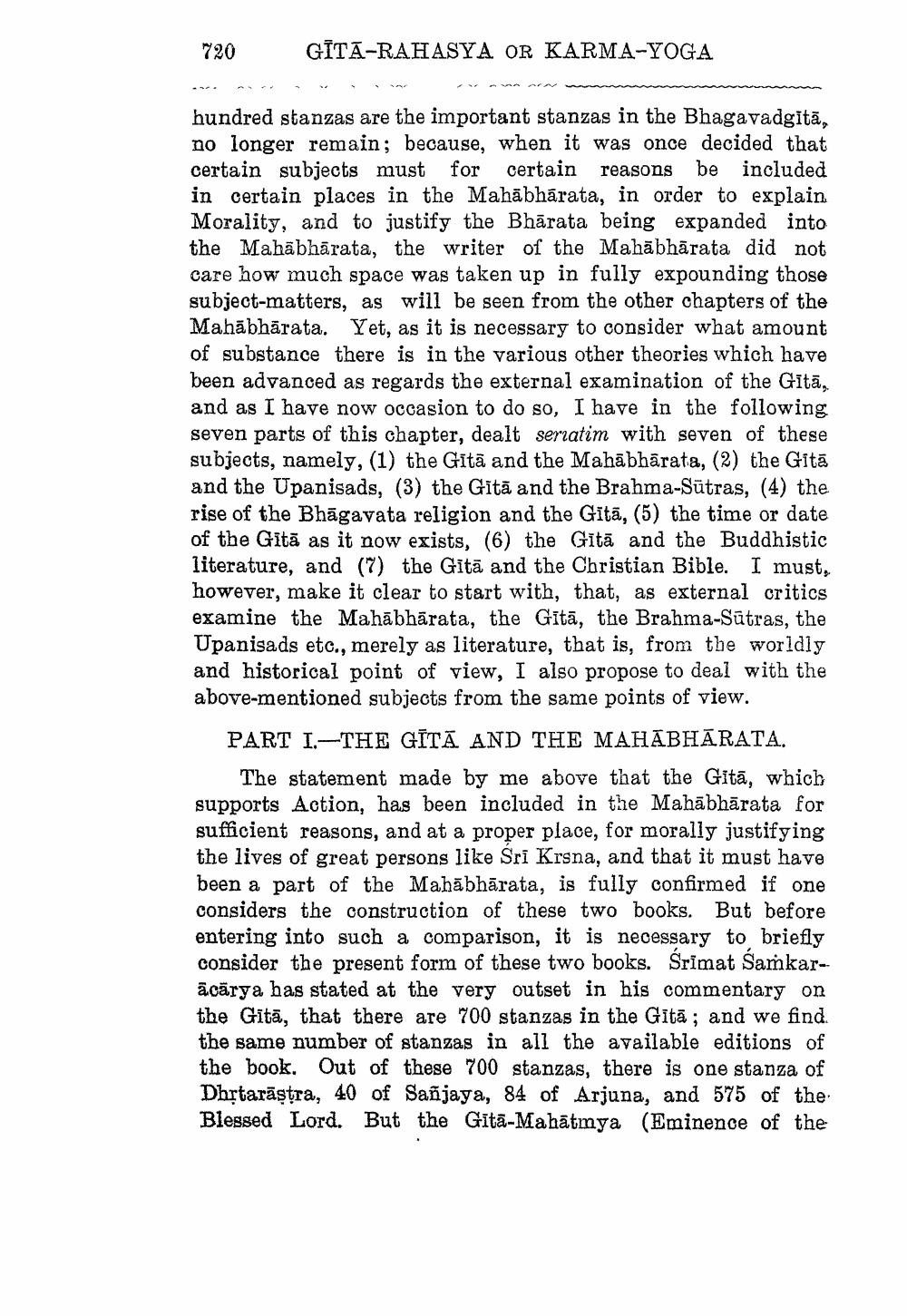________________
720
GĪTĀ-RAHASYA OR KARMA-YOGA
hundred stanzas are the important stanzas in the Bhagavadgitā, no longer remain; because, when it was once decided that certain subjects must for certain reasons be included in certain places in the Mahābhārata, in order to explain Morality, and to justify the Bhārata being expanded into the Mahābhārata, the writer of the Mahābhārata did not care how much space was taken up in fully expounding those subject-matters, as will be seen from the other chapters of the Mahābhārata. Yet, as it is necessary to consider what amount of substance there is in the various other theories which have been advanced as regards the external examination of the Gītā, and as I have now occasion to do so, I have in the following seven parts of this chapter, dealt seriatim with seven of these subjects, namely, (1) the Gītā and the Mahābhārata, (2) the Gitā and the Upanisads, (3) the Gītā and the Brahma-Sūtras, (4) the rise of the Bhāgavata religion and the Gitā, (5) the time or date of the Gītā as it now exists, (6) the Gitä and the Buddhistic literature, and (7) the Gitā and the Christian Bible. I must, however, make it clear to start with, that, as external critics examine the Mahābhārata, the Gītā, the Brahma-Sūtras, the Upanisads etc., merely as literature, that is, from the worldly and historical point of view, I also propose to deal with the above-mentioned subjects from the same points of view.
PART I.-THE GĪTĀ AND THE MAHABHARATA.
The statement made by me above that the Gitā, which supports Action, has been included in the Mahābhārata for sufficient reasons, and at a proper place, for morally justifying the lives of great persons like Sri Krsna, and that it must have been a part of the Mahābhārata, is fully confirmed if one considers the construction of these two books. But before entering into such a comparison, it is necessary to briefly consider the present form of these two books. Srimat Samkarācārya has stated at the very outset in his commentary on the Gītā, that there are 700 stanzas in the Gītā; and we find the same number of stanzas in all the available editions of the book. Out of these 700 stanzas, there is one stanza of Dhrtarāstra, 40 of Sañjaya, 84 of Arjuna. and 575 of the Blessed Lord. But the Gītā-Mahātmya (Eminence of the




